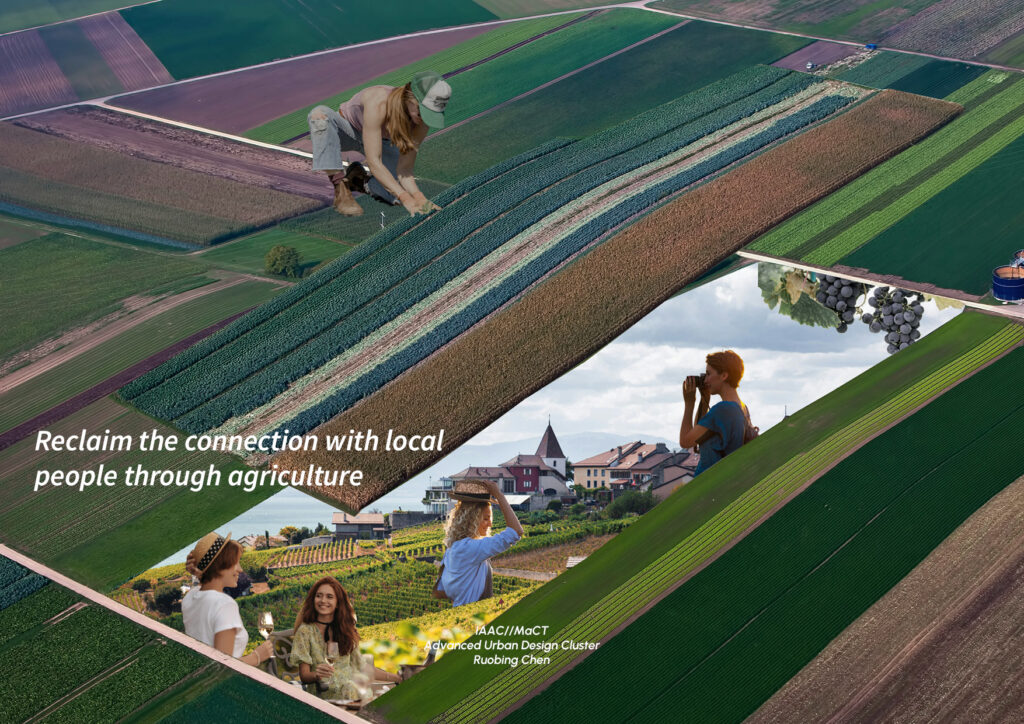Tourism has been leading the economic development and urbanization process in Mallorca since 1970s, Despite the tourists dominating the coastlines in the latest four decades, the vast inland area has been long for agriculture. The rapid expansion of the tourism industry has resulted in significant environmental impact. On the other hand, the agriculture sector is always overlooked in the discussion of the local economy. Symbiotic tourism is a project aims to explore the possibility to collaborating tourism and local agriculture and change the land use planning strategy in order to promote sustainable tourism. It is a citizen science based platform to collect and coordinate community-based tourism activities.
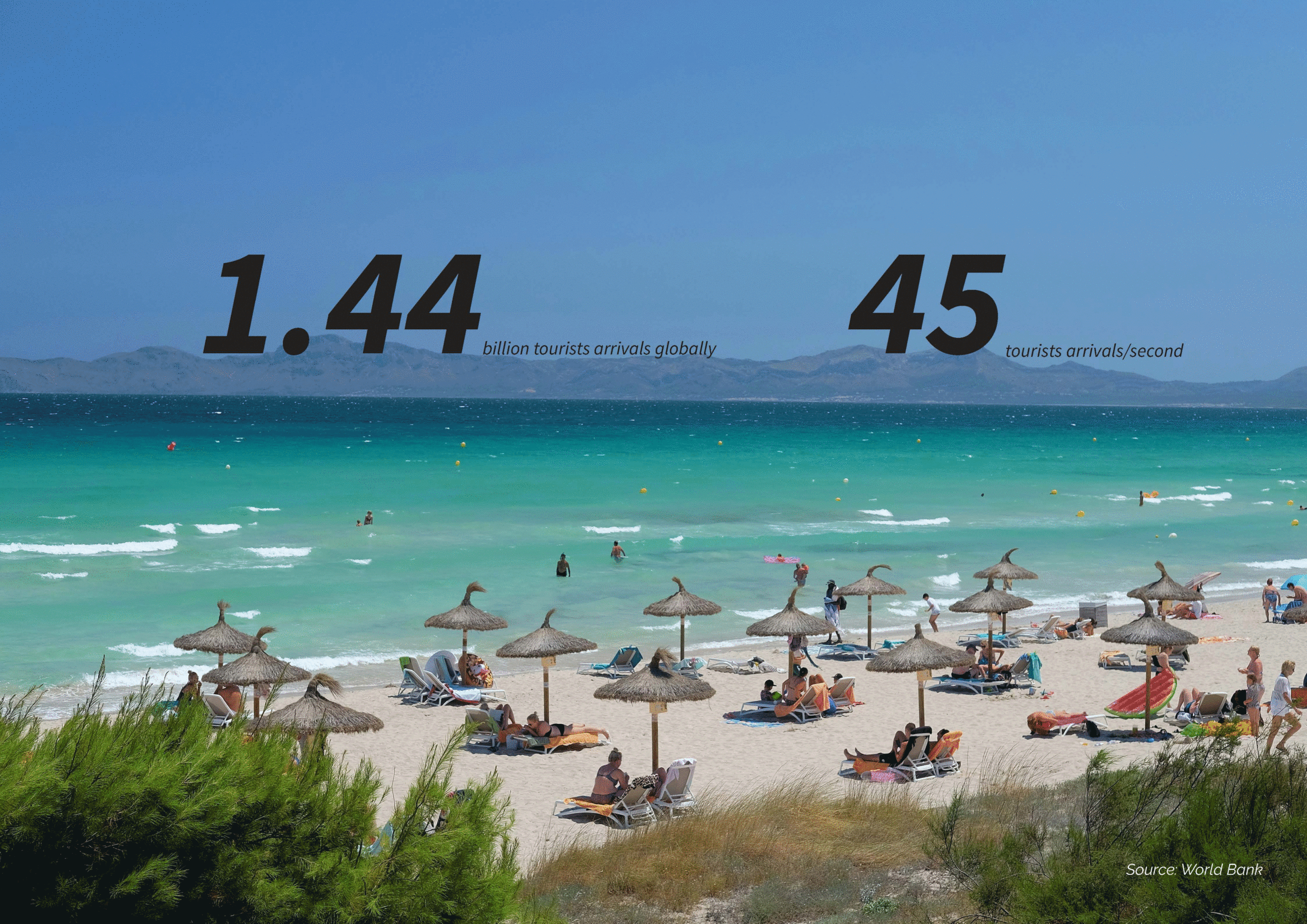
INTRODUCTION
In 2023, worldwide tourist arrivals reached 1.44 billion, which means about 45 arrivals every single second. This immense tourist flow brings significant economic benefits. The tourism sector contributes 9.1% to the global GDP and supports 300 million jobs worldwide. However, how are these tourists distributed? An observation from 2022 shows that 80% of tourists visit only 10% of the destinations, which includes the case study site for this research, the Mallorca island.
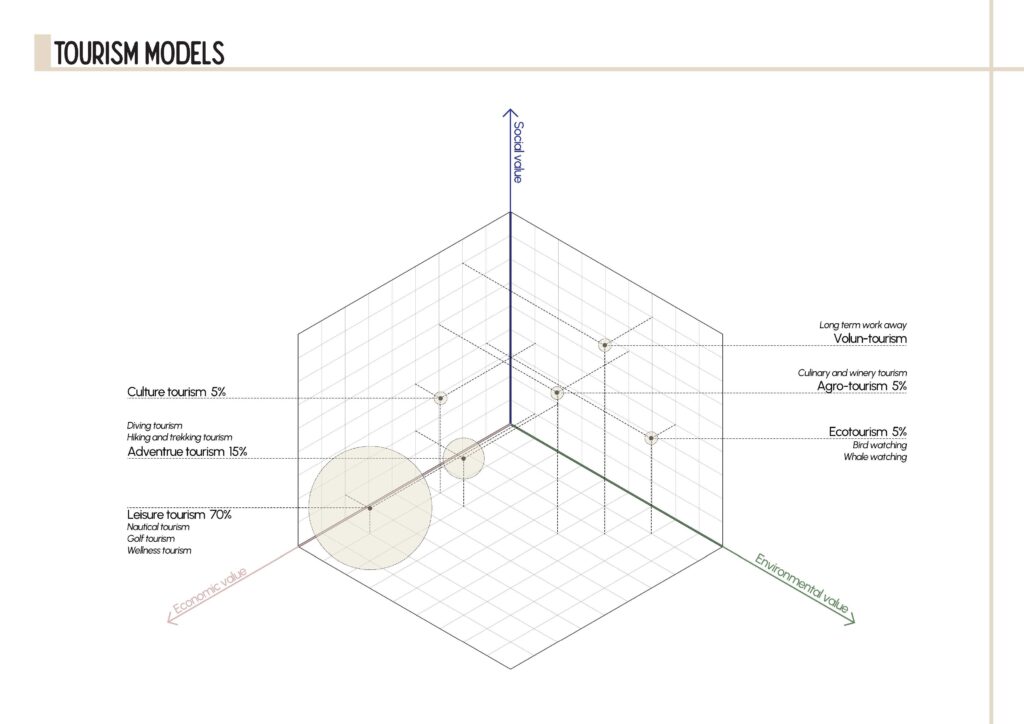
70% of the tourism market is for leisure purposes, which has the highest economic value but relatively low social and environmental value. Other forms of tourism, such as cultural tourism, adventure tourism, agro-tourism, and eco-tourism, have a much smaller market share but higher social and environmental values. The tourism market is now criticized for its significant environmental impacts and the cultural degradation of local communities.
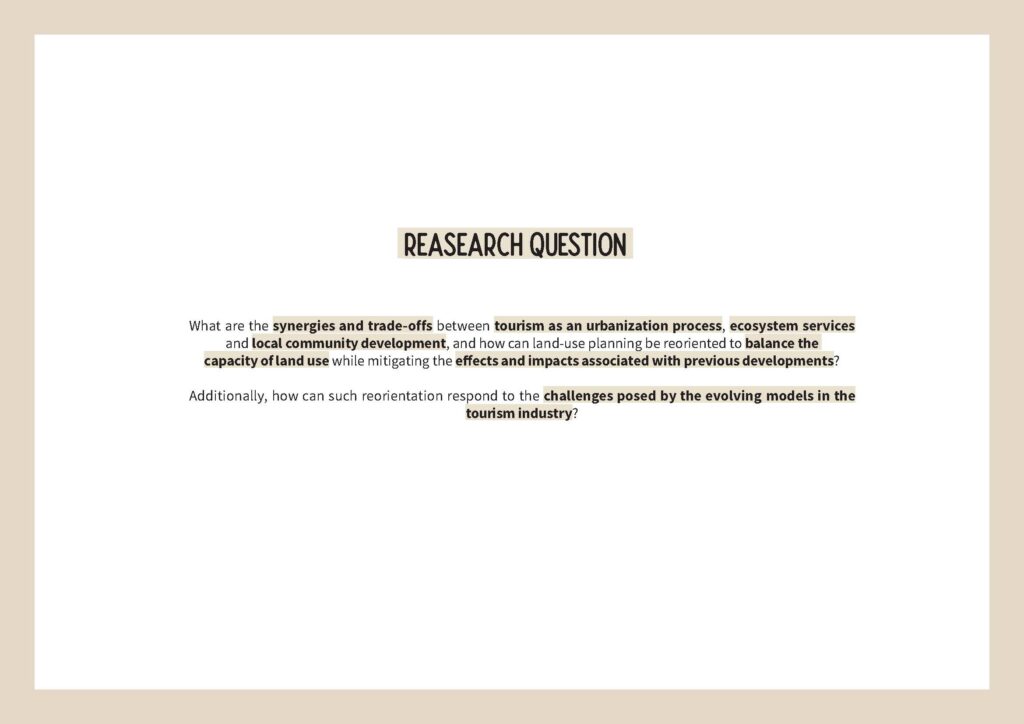
Diagnosis of the current system
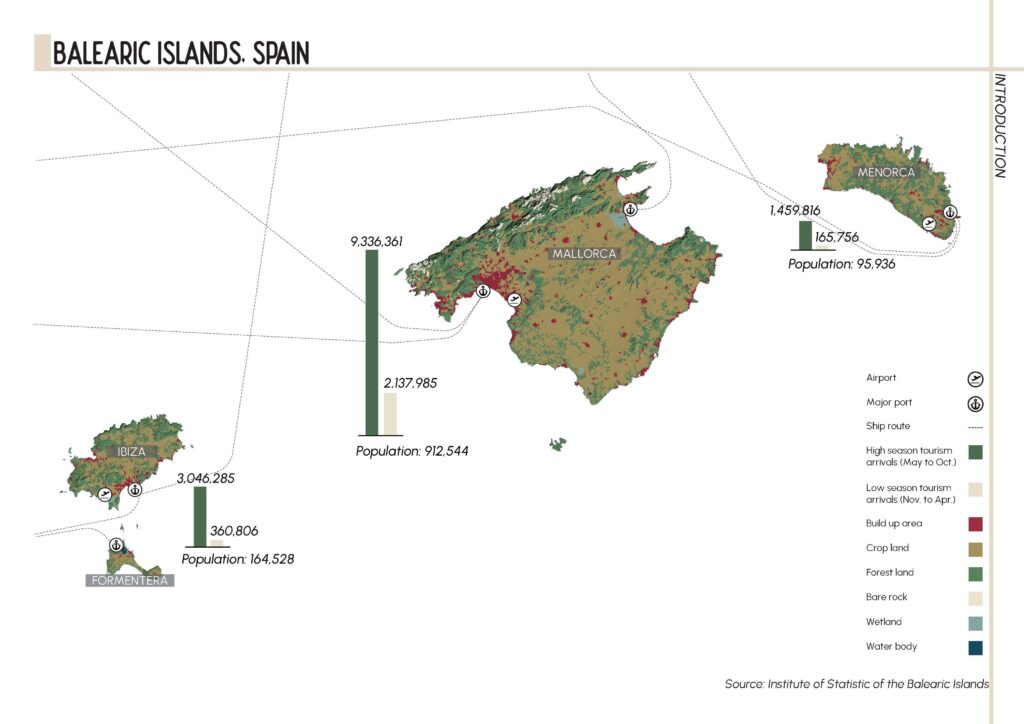
The Balearic islands sit in the heart of Mediterranean, the sunny climate and beautiful landscape makes them one of the top tourism destinations. However, the influx of tourists puts significant pressure on the island, especially compared to the local resident population. The number of tourists has surged from several thousand to 16 million, while the territory remains unchanged. This leads to increasing tourism density and resource scarcity, sometimes resulting in extreme conditions. Mallorca has the highest tourist’s influx compare to the local population, Additionally, agricultural land occupies more than half of the Mallorca island but is often overlooked in discussions. In that case, it is crucial to link Mallorca’s high tourism flow and the basic needs of food production and try to make a conversation.

The history of tourism in Mallorca began in the 1950s, coinciding with the end of the dictatorship in Spain. The government urgently needed ways to boost the economy, and Mallorca emerged as an ideal destination. The first tourism boom occurred in the 1960s, which also saw a boom in the real estate market. From the 1960s to the present, the tourism flow kept increasing, investing in second homes and vacation rentals has become very popular among both tourists and local residents. However, during the COVID-19 shutdown, tourism flow plummeted, leading to significant job losses in the tourism sector. This crisis highlighted the vulnerabilities of Mallorca’s tourism-dependent economy and lead to reconsideration of this simplistic economic structure.
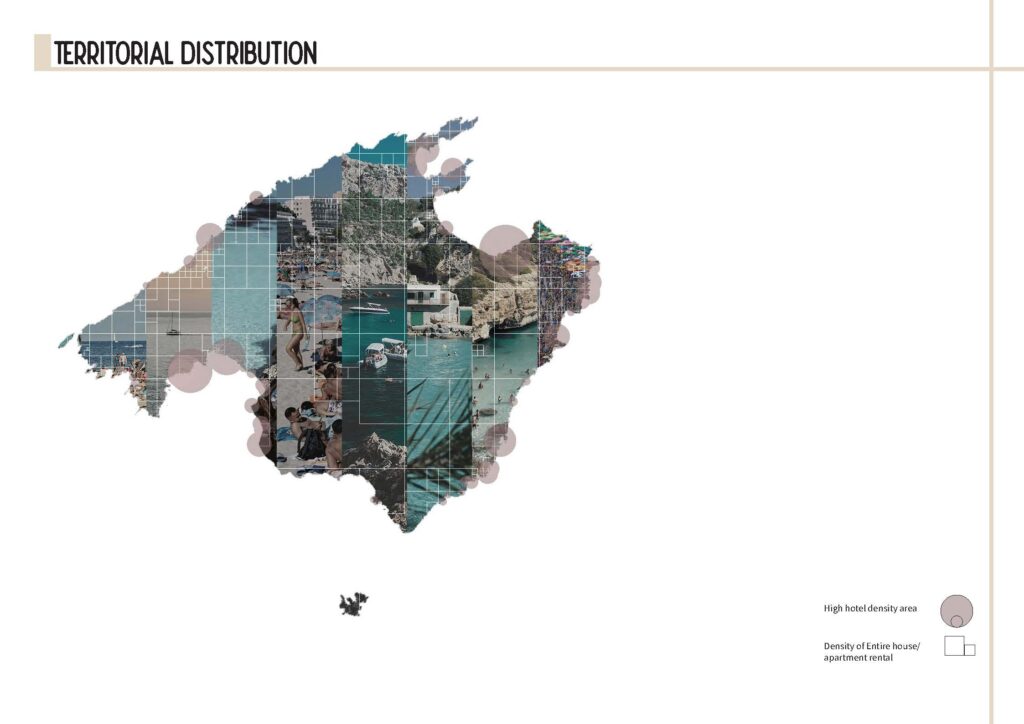
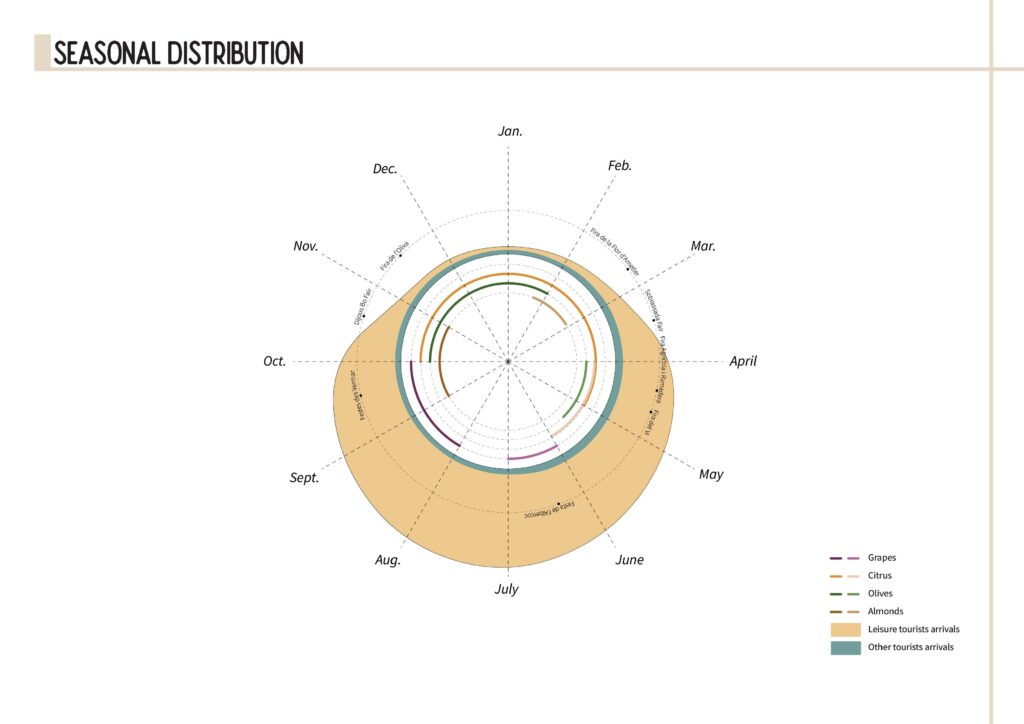
There is an uneven distribution among tourism attractions within the territory. The island’s main attractions are its sea and sun, making the coastline the primary focus for tourists. Additionally, there is a notable seasonal distribution throughout the year, with far more tourists visiting in the summer than in the winter.
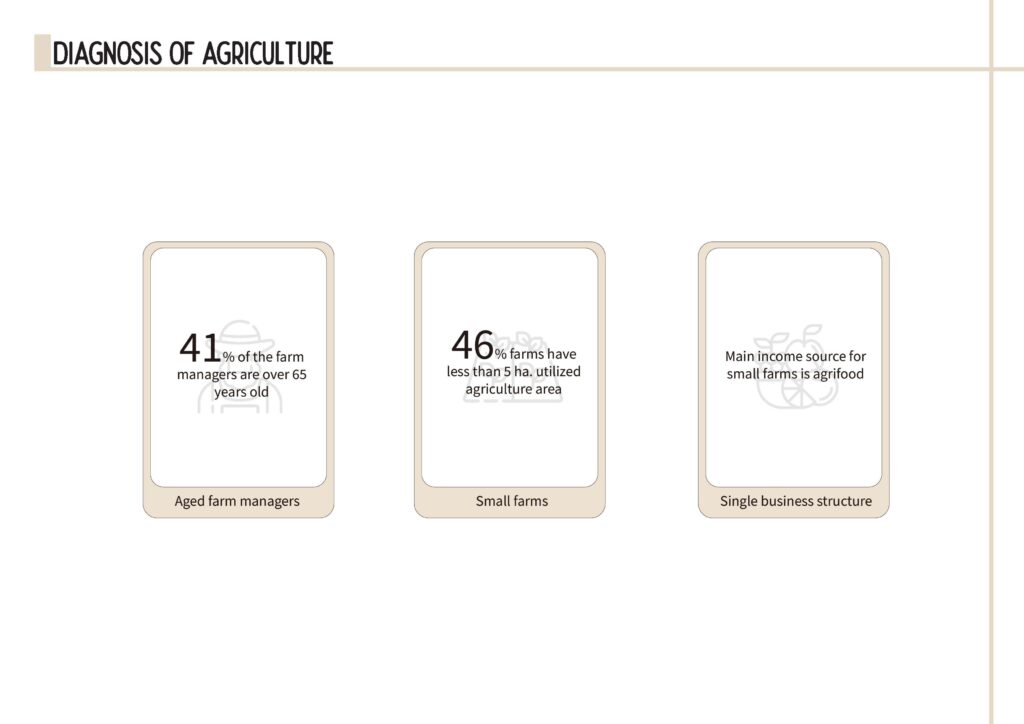
Meanwhile, agriculture on the island is also facing a crisis. The aged farm managers make the transition harder, the small farms and the single business structure of them make them more vulnerable when reacting to climate crisis and social issure.
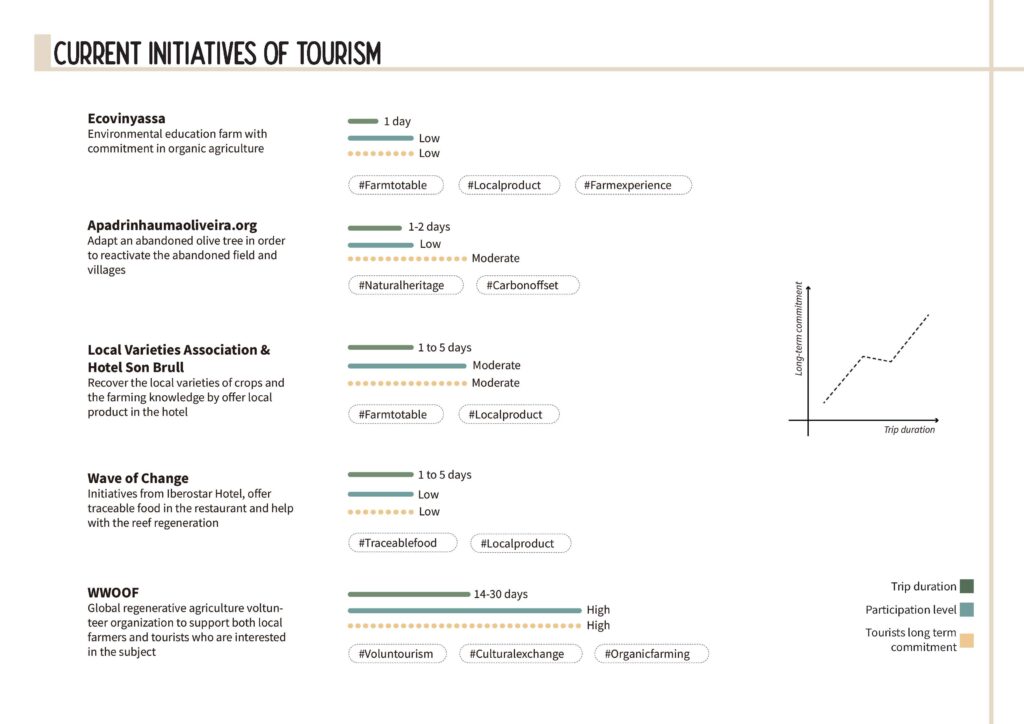
What are the local people doing to response to such crisis?
These are experiments from the local community and business groups, focusing on sustainable agro-tourism with varying levels of participation and different trip durations. With the increase of trip days and level of participation, we can make an assumption that the long-term commitment of the travelers is also increasing.
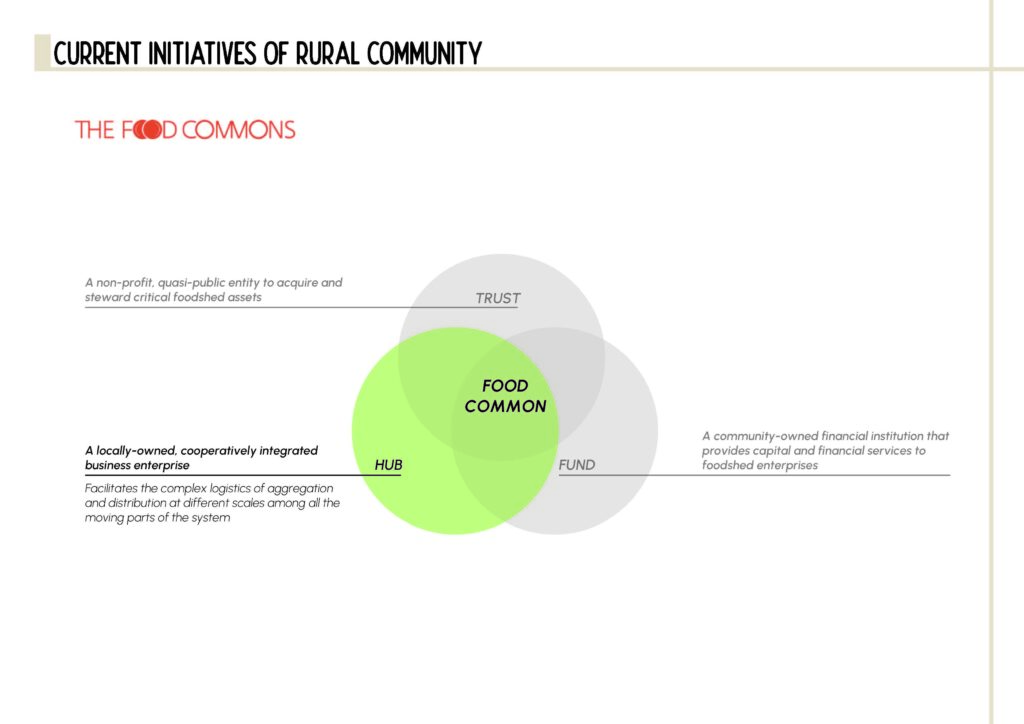
The Food Coomons aims at achiving a localized food system in order to distribute the resources and maximize the benefit to the local players in the system. They have three main bodies, which are a trust, a fund and a hub. The hub explores the potential of integrating all the players in the local food system including farmers, food processor and distributers. This experiment has transformed the land ownership to land stewardship, the decision-making process can be made at a local level with the strong connections of the value chain.
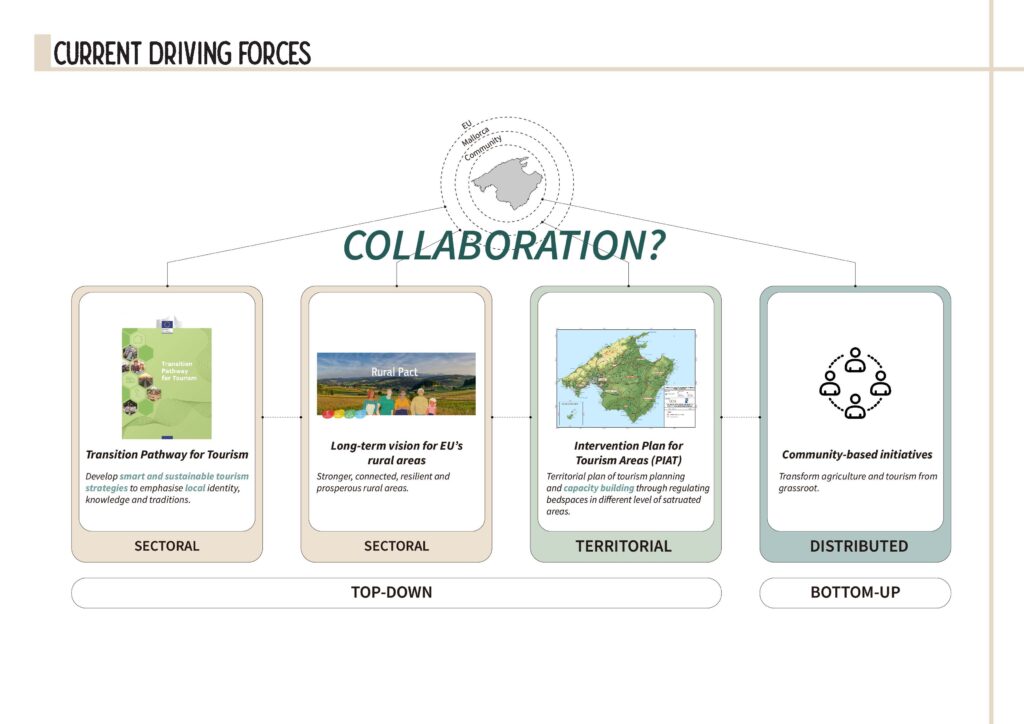
identify other driving forces that could lead to a transition in tourism and also support the rural community and agriculture. First of all, I identified two EU-level policy frameworks that focus on the transition of tourism development and rural development respectively. These frameworks are sector-specific. Additionally, a local territorial tourism development plan was proposed by the Mallorca Council, it mainly focus on capacity building for different level of saturated zones by limiting bedspaces. And finally, the community-based initiatives and experiments proposed by the local residents. These are the distributed local networks that aims for transformation from grassroot power.
However, the top down policy frameworks need to find practical implementation methods, the distributed initiatives need coordination. How can we make them collaborate?
The landscape of tourism and agriculture
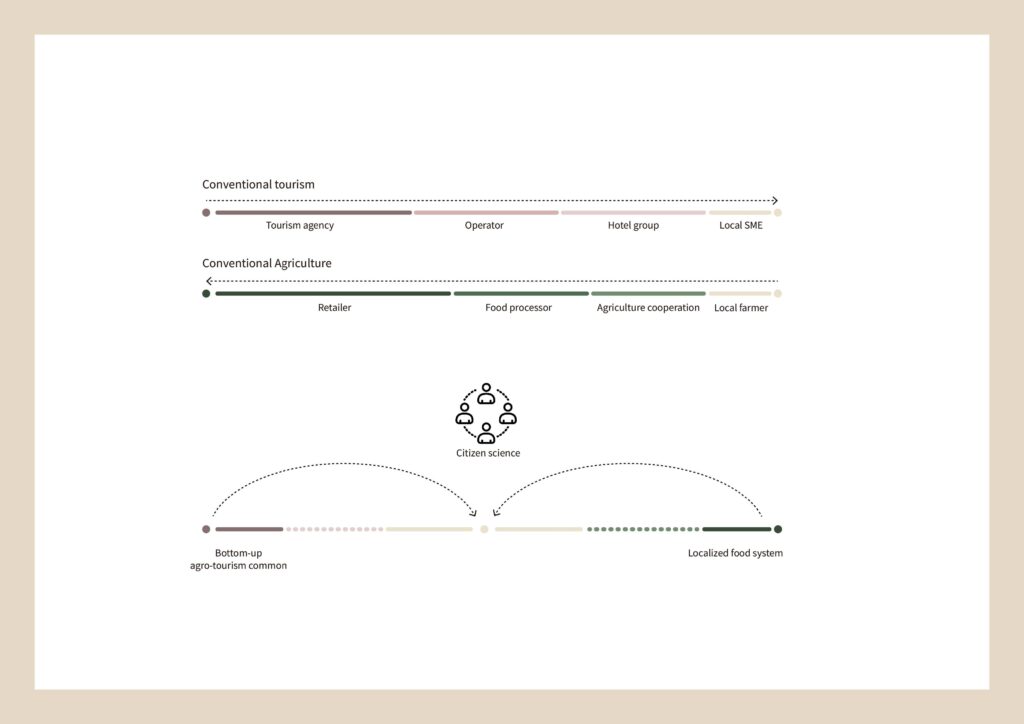
For the conventional tourism model and agriculture model, there are always several parts in the value chain from tourists to local smes or from local farmers to the market. What I want to propose here is a platform based on citizen science, that can build a bottom-up agro-tourism common, and a localized food system.

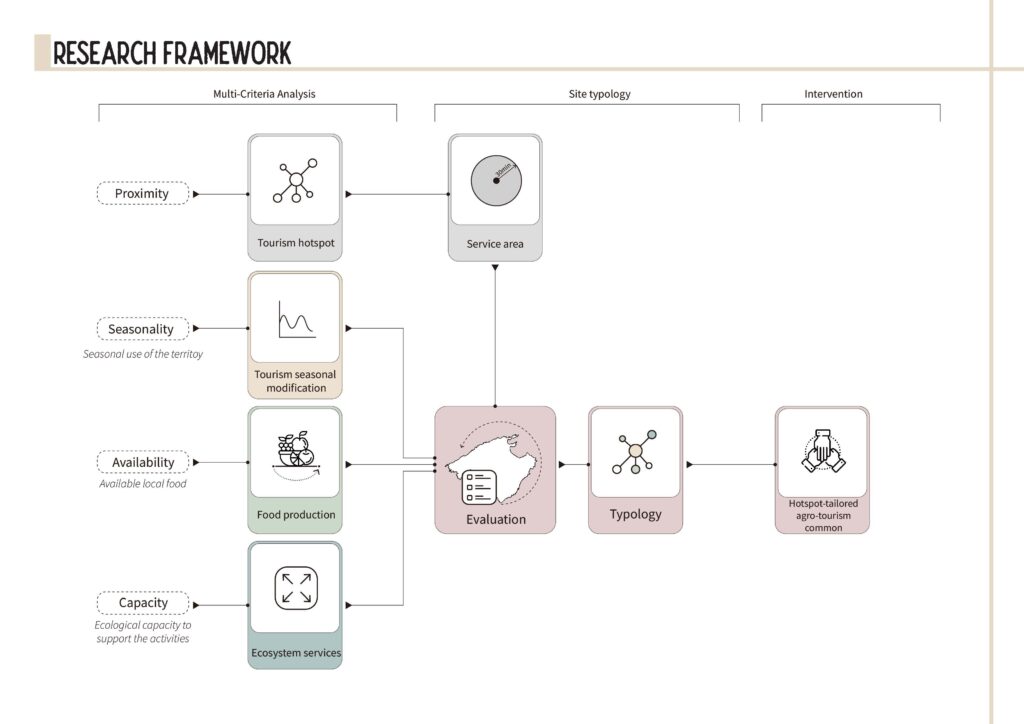
Base on the research, the four main pilars of the research are proximity, seasonality, capacity and availability. From the proximity, the tourism hotspots and the service area of each are identified as the target for evaluation. From the seasonality capacity and availability, the evaluation matrix was set, This leads to the identification of hotspot typologies, and based on these typologies, a tailored agro-tourism common strategy is proposed.

The hotspot was identified from a 500 meter density based clustering algorithm, then the hotspots with more than 100 listings were selected.

The indicator maps for evaluation are calculated from 3 pillars, which are the seasonality, capacity and availability. For seasonality, the tourism modification seasonal change was done base one access accommodation activities attractions and amenities. For availability, the food production map was done from agriculture land use. And for capacity, the supporting ecosystem services map is calculated from habitat maintenance soil fertility and hydrological cycle.

All the map layers are normalized in order to be comparable in the evaluation process. From the evaluation results, compare to the food production, some hotspots have higher ecosystem service index which means they have higher capacity for the economic activities.
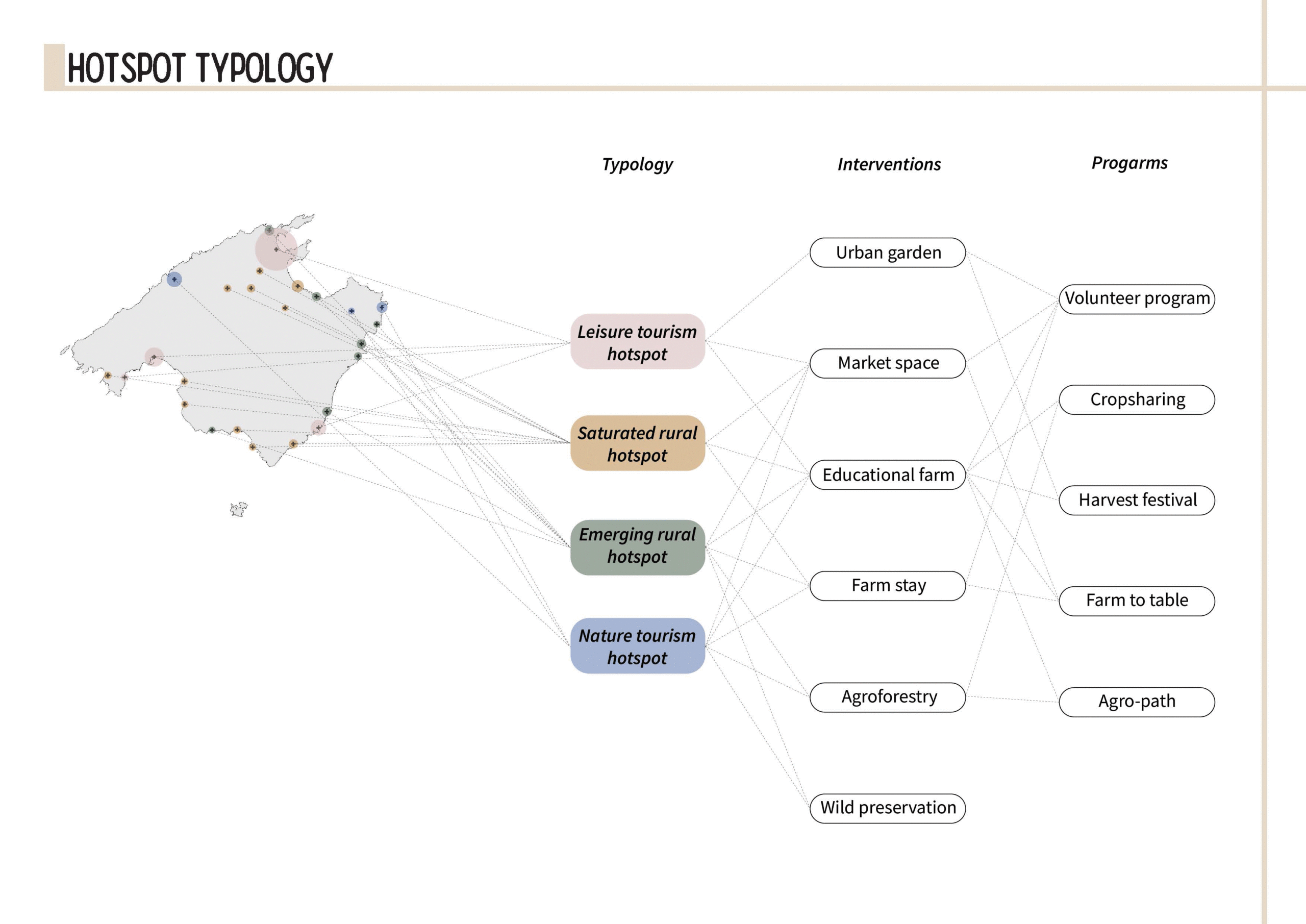
The hotspots are classified as four typologies, the leisure tourism hotspots are with high tourism flow in both seasons, the saturated rural hotspots are with high food production but lack of capacity, the emerging rural hotspot that have high capacity, the nature tourism hotspot are located close to protected areas, so the availability is relatively low but have high potential to connect with the protected areas.
Then a series of interventions are proposed from tourism participation oriented to local expert oriented, along with some community-based social programs. Furthermore, different categories of land are selected base on crop type and land use for different activities.
Symbiotic tourism model
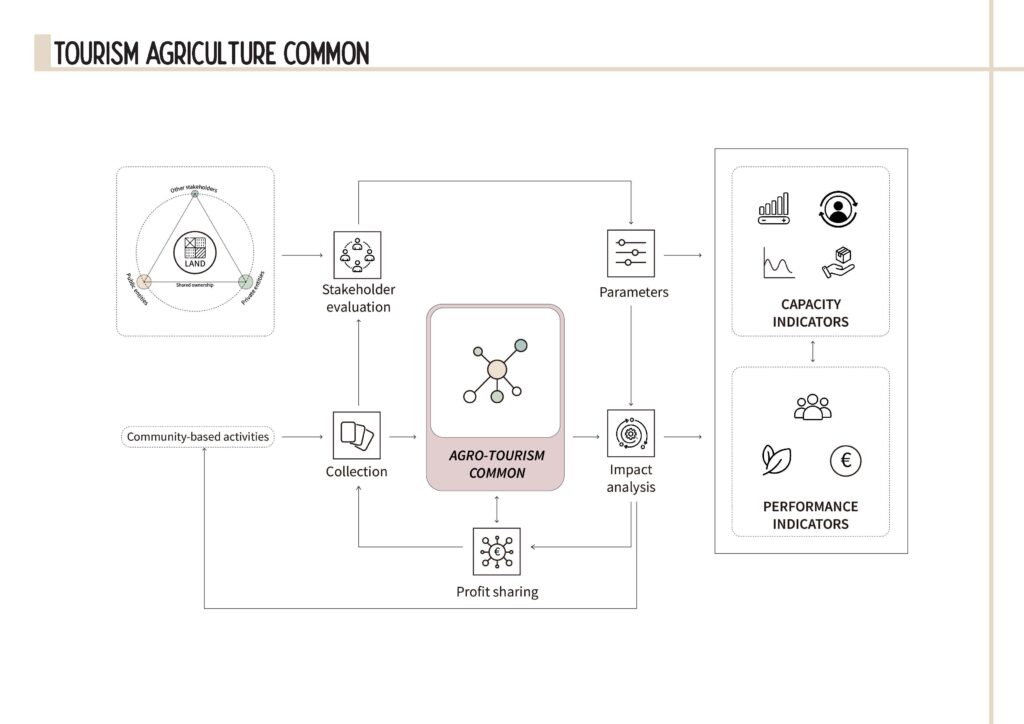
For the strategy, a hotspot tailored agrotourism common is proposed from these steps, first, the community-based activities are collected to the common as a database, then, the stakeholders will evaluate the activities, then, from two groups of constrained parameters, the impact analysis will be conducted to feedback to the common and the runner of activities. The profit from the activities will go through a profit-sharing fund, part of the profit will be reinvest to the activities, part of the profit will be put into the fund to support the common.

For the stakeholders, they are divide into three main groups, which are public entities, private entities and other stakeholders. The land for community based initiatives will have a shared ownership by all the stakeholders through the common. The public and private entities are the key players in the management of activities and land, so they will have larger share to the ownership, other stakeholder will have a more diverse and flexible participation so they will have smaller share.
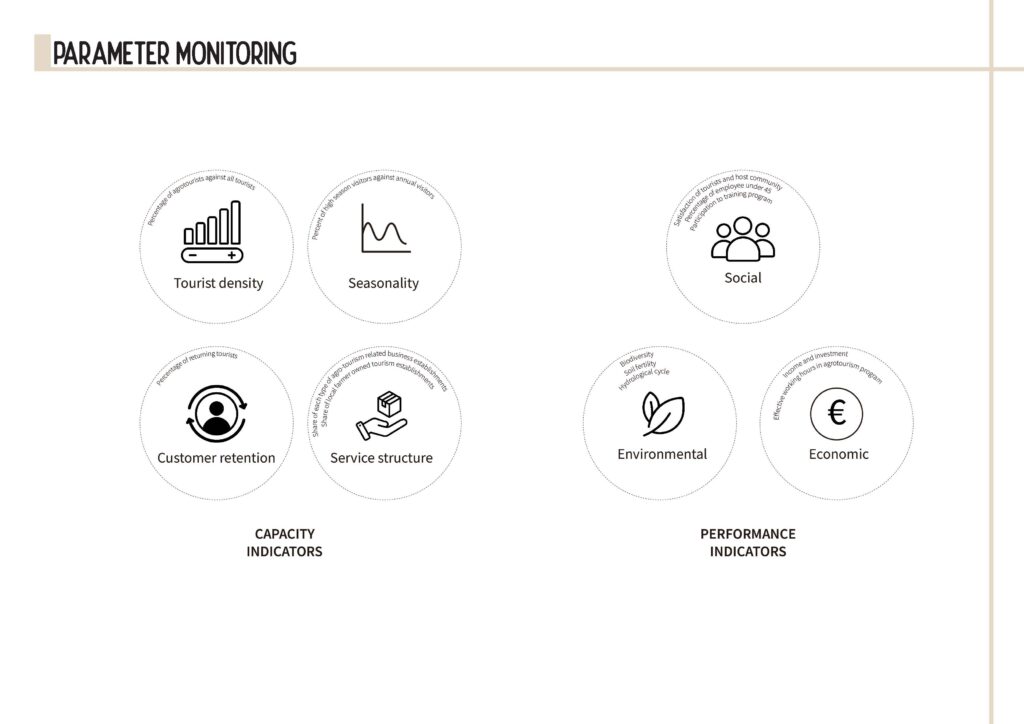
The parameters are two groups of constrained parameters, one is for the evaluation of capacity which is to limit the development in case of overtourism, one is for performance which is for both evaluation and to understand the needs of the local people.
